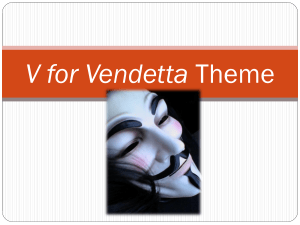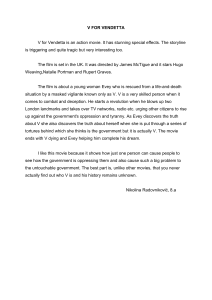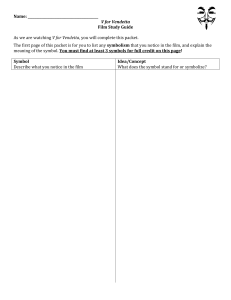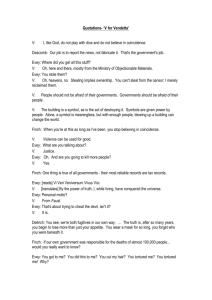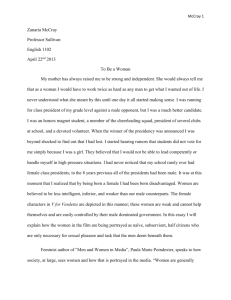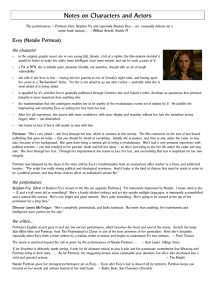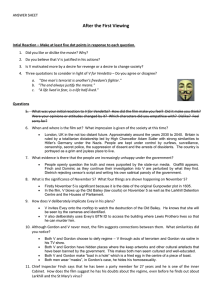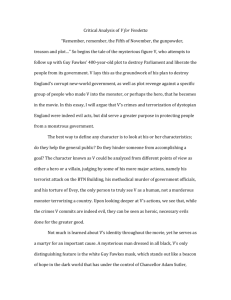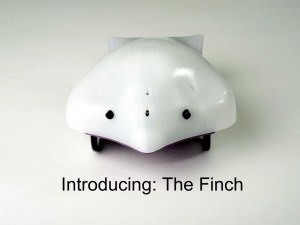Methods of Story-telling - Featonby
advertisement
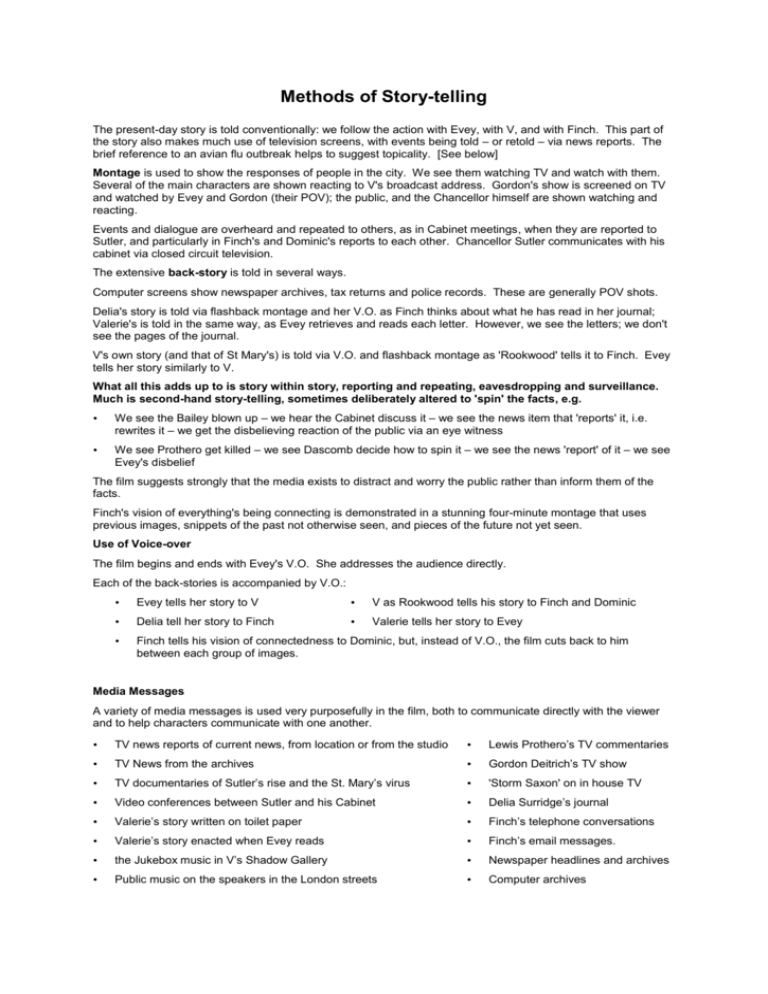
Methods of Story-telling The present-day story is told conventionally: we follow the action with Evey, with V, and with Finch. This part of the story also makes much use of television screens, with events being told – or retold – via news reports. The brief reference to an avian flu outbreak helps to suggest topicality. [See below] Montage is used to show the responses of people in the city. We see them watching TV and watch with them. Several of the main characters are shown reacting to V's broadcast address. Gordon's show is screened on TV and watched by Evey and Gordon (their POV); the public, and the Chancellor himself are shown watching and reacting. Events and dialogue are overheard and repeated to others, as in Cabinet meetings, when they are reported to Sutler, and particularly in Finch's and Dominic's reports to each other. Chancellor Sutler communicates with his cabinet via closed circuit television. The extensive back-story is told in several ways. Computer screens show newspaper archives, tax returns and police records. These are generally POV shots. Delia's story is told via flashback montage and her V.O. as Finch thinks about what he has read in her journal; Valerie's is told in the same way, as Evey retrieves and reads each letter. However, we see the letters; we don't see the pages of the journal. V's own story (and that of St Mary's) is told via V.O. and flashback montage as 'Rookwood' tells it to Finch. Evey tells her story similarly to V. What all this adds up to is story within story, reporting and repeating, eavesdropping and surveillance. Much is second-hand story-telling, sometimes deliberately altered to 'spin' the facts, e.g. We see the Bailey blown up – we hear the Cabinet discuss it – we see the news item that 'reports' it, i.e. rewrites it – we get the disbelieving reaction of the public via an eye witness We see Prothero get killed – we see Dascomb decide how to spin it – we see the news 'report' of it – we see Evey's disbelief The film suggests strongly that the media exists to distract and worry the public rather than inform them of the facts. Finch's vision of everything's being connecting is demonstrated in a stunning four-minute montage that uses previous images, snippets of the past not otherwise seen, and pieces of the future not yet seen. Use of Voice-over The film begins and ends with Evey's V.O. She addresses the audience directly. Each of the back-stories is accompanied by V.O.: Evey tells her story to V V as Rookwood tells his story to Finch and Dominic Delia tell her story to Finch Valerie tells her story to Evey Finch tells his vision of connectedness to Dominic, but, instead of V.O., the film cuts back to him between each group of images. Media Messages A variety of media messages is used very purposefully in the film, both to communicate directly with the viewer and to help characters communicate with one another. TV news reports of current news, from location or from the studio Lewis Prothero’s TV commentaries TV News from the archives Gordon Deitrich’s TV show TV documentaries of Sutler’s rise and the St. Mary’s virus 'Storm Saxon' on in house TV Video conferences between Sutler and his Cabinet Delia Surridge’s journal Valerie’s story written on toilet paper Finch’s telephone conversations Valerie’s story enacted when Evey reads Finch’s email messages. the Jukebox music in V’s Shadow Gallery Newspaper headlines and archives Public music on the speakers in the London streets Computer archives Benny Hill chase music in Gordon Deitrich’s show Tax records Guy Fawkes masks delivered by the British courier service. Police records V's pirate address to the people Surveillance camera images The Count of Monte Cristo on TV
